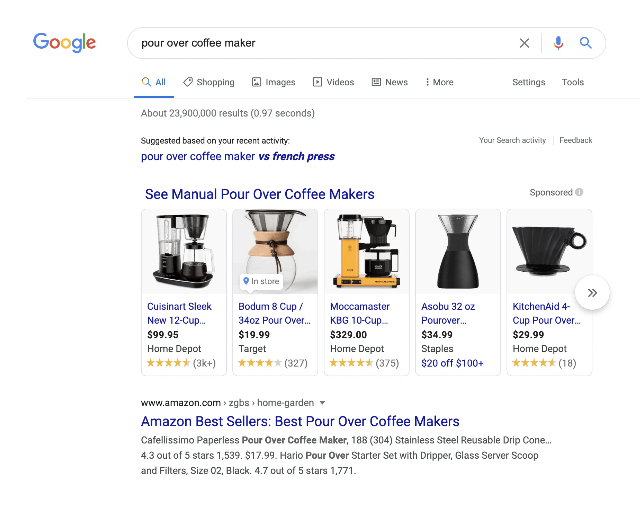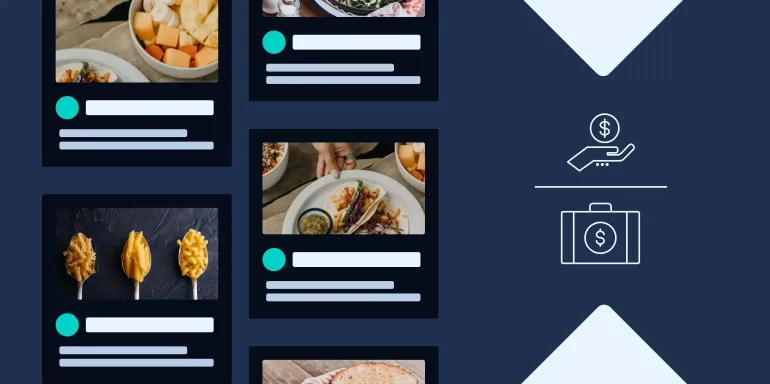As an advertiser, you want to achieve growth while spending your advertising dollars as efficiently as possible. Whether you’re running social media, paid search, or native ads, launching an advertising campaign is only half the battle—ascertaining the impact that campaign has on growth is the other half.
That’s where return on ad spend (ROAS) comes in. ROAS measures spend efficiency for a specific channel, allowing advertisers to track and compare their ad campaigns’ effectiveness by calculating the total revenue generated by a campaign divided by the total cost.

Putting it another way, ROAS shows how effectively you’ve communicated advertising messages to a target audience. A key driver of that effectiveness is message relevance. The more relevant your message is to your audience, the higher your ROAS will be.
ROAS data is particularly helpful in measuring ad performance because it takes conversions into account instead of simply counting clicks. While it’s a good idea to measure click-through rate (CTR), it’s even more important to track your ROAS so you can develop advertising strategies that meet your budget.
How do you maximize your ROAS? Here are five ways you can significantly increase ROAS so you’re creating relevant, targeted, and effective ads—and making the most of your ad dollars.
1. Reduce your ad cost
There’s one straightforward way to improve ROAS: spend less on your ads. But there are different tactics to keep less money from going out the door. Here are a number of ways to lower your ad costs:
Experiment with your bidding strategy. Landing on a winning advertising strategy is often a trial-and-error process. Try not to get locked in to one way of setting up your ads. Even if one is successful, you’ll need to modify it at some point to keep up with marketplace changes. Consider these two approaches to mix up your bidding strategy when running Google ads:
- Manual bidding: You can manually adjust your maximum bid with manual or enhanced costs per click (CPC) to control ad costs without impacting advertising conversions.
- Automated bidding: There are a host of different ways to set up automated bids that are designed to help you achieve specific ad goals. Smart bidding uses machine learning to optimize conversions in every auction.
Aim for a lower position in search results. You can save money by not having your ad appear in the top spot on search engine results pages (SERPs). If you go for the third position, say, your ad will cost less and it will still be in front of your visitors’ eyes on the first page—and still above the fold.
Target the right audience. By identifying your target audience, you spend less on advertising while reaching more prospective users. For example, you can identify users by geolocation, job title, or device. Consider segmenting your audience based on multiple markers and then creating ads and post-click landing page experiences that resonate with those segmented groups. Segmentation improves just about every aspect of your campaigns, such as Google Quality Score, click-through rate (CTR), and your users’ landing page experiences.
Pay attention to keywords. Researching and implementing the right keywords can dramatically improve your Google Quality Score and advertising impact. Don’t forget about using negative keywords to exclude certain search terms so your campaigns focus on very specific keywords that matter to your audience. And while it might seem counterintuitive, bid on competitors’ brand terms to ensure that you appear in those search results as well.
2. Improve advertising conversions with relevant landing pages
Increasing conversion rates is the other half of your advertising strategy, and it can have a big impact on ROAS. The key is to connect ads to relevant post-click experiences so that your users’ intent (based on how they search) is reflected through the campaign from first click to landing page.
Here are three ways to make landing pages more relevant and improve conversion rates:
- Create personalized post-click landing pages. Optimize your landing pages using landing page design best practices to ensure a positive user experience. Personalize your landing pages by not only message-matching your users’ pre-and post-click experiences but also by appealing to the needs and goals of your target audience segments to increase your revenue with paid advertising.
- Optimize page speed. Speed is a critical factor in user experience. Users are increasingly impatient, and pages with longer load times can drive up your bounce rates and drive down average time on page. Make sure your page load speed is optimized by fixing common speed issues, such as unoptimized images, large media files, and JavaScript issues. Instapage’s Thor Render Engine™ performs a full rewrite of landing pages to speed up response and load times.
- Deploy conversion-driven storytelling. When writing your ads, include compelling microstories to keep visitors engaged throughout the advertising journey. Leverage audience data—such as psychographics and demographics—that taps into your users’ beliefs and values.
3. Increase your customer lifetime value
A long held adage in advertising is: “Your best customers are the ones you already have.” In fact, holding on to current customers costs significantly less than acquiring new ones and the probability of selling to current customers is much higher than trying to convert users unfamiliar with your brand. So, part of increasing your ROAS is to increase your customer lifetime value (LTV), the estimated average revenue that a customer will generate throughout their lifespan.
Consider these methods to increase LTV:
- Retarget campaigns. Use cookies and pixels to track visitors who have left your page without converting. Deploy retargeting ad campaigns to win them back.
- Email campaigns. Use email nurture campaigns to reiterate your offer, keep subscribers interested, and convince them to convert.
- Rewards and loyalty programs. Launch loyalty programs to encourage and reward customers in exchange for an action you want them to take.
- Upsells. Offering customers temporary upgrades, bundled products, and free shipping are some ways to upsell and increase revenue and ROAS.
4. Optimize Google Shopping Ads
Google’s product listing ads (PLAs) continue to be one of the most popular advertising channels. PLA ad spend continues to increase, especially on mobile devices. So, it’s a good idea to optimize your PLA shopping ads by making them relevant, targeting your segmented audience, and collecting and analyzing performance data.

5. Step away from the data
Some ROAS issues may be unrelated to your advertising strategies. Take time to think about obstacles that might be connected to your products themselves or the purchasing process. Could you bundle products in a way that would make them more appealing? Should you rethink your price point?
Also, consider the call-to-action (CTA) route you’re asking your customers to navigate. If it’s confusing or requires them to click too many times, that could result in a drop in conversions and negatively impact ROAS.
Create fully optimized landing pages
A better ROAS starts with better landing pages. We’re ready to help. Instapage offers three different plans to help take the stress out of building, optimizing, and converting. Learn more about Instapage here.
